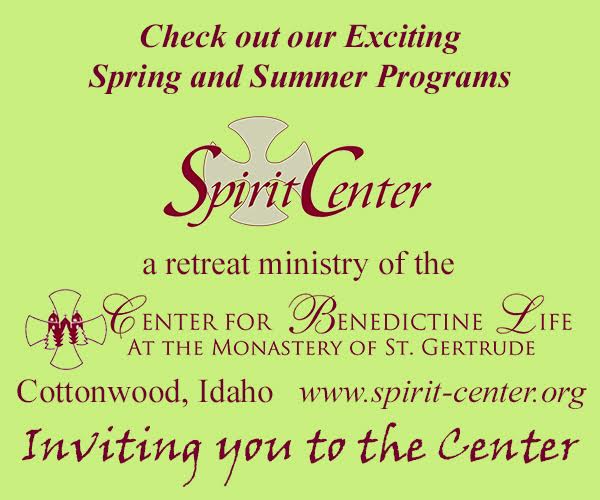Sarah Conover has been a Buddhist practitioner for nearly three decades. She’s ready to answer your questions about the faith. What do you want to ask a Buddhist? Fill out the form below or submit your question online.

A. I’ve combined three questions from three different readers, because a response to one overlaps with responses to all. In short, engaging in violence or harm of any sort directly counters the aim of all Buddhist practice: the aspiration to end suffering.
Observing five precepts of morality is foundational to Buddhism. All five precepts stem from the first, a basic intention of ahimsa, non-harming: I undertake the rule of training to refrain from injury to living things. For lay practitioners, refraining from harm underlies the four other core precepts of morality: to avoid the taking of things not given, to avoid sexual misconduct, to avoid false speech, to abstain from substances that cause intoxication and heedlessness.
In the records of his teachings, the Buddha was unequivocally against killing animate life. Buddhist monastics follow several hundred precepts beyond the five preliminary, providing the conditions and guidance for them to live a life of harmlessness. Killing people, as well as encouraging others to commit murder or suicide, or to have an abortion, result in expulsion from the monastic order.
It’s important to note that the Buddhist paradigm doesn’t understand these offenses in the same way many of us raised in the Judeo-Christian framework of absolutes do (good versus bad or evil, right versus wrong). In Buddhism, harm to oneself or another is the result of ignorance, the result of a partial understanding of life’s predicament. His Holiness the Dalai Lama said, “Hatred comes because we don’t appreciate interdependence. Suffering comes because we don’t understand interdependence.” Because nothing exists as an individual entity, because nothing exists without benefiting from myriad forces and conditions that sustain its life, to harm any sentient being is to harm oneself.
On the level of the personal and practical, whether you’re a meditator or not, you’ve likely experienced the direct link between a hurtful or careless word you’ve spoken and feeling jangled or disturbed about it later. Without fail, your mind will re-experience and re-play some aspects of the event. I find this to be one of meditation’s greatest gifts ‒ to help us self-remember and learn from our recollection. For example, most of us are familiar with the internal sequence of regret and remorse after a burst of righteous anger. I’m not a fast learner in this regard, but after I meditate, I inevitably come to understand that my statement would have been vastly more effective had it been gentler or perhaps not said at all. Whether it seems insignificant or large in scope, action that is wounding to oneself or to others begins a ripple effect that we can’t predict. From the Buddhist perspective, equanimity and morality are inextricably connected both in immediate consequences and in the longer horizon of karma (more on that in the next column).
The Buddha was more interested in the quality of one’s mind than in perpetuating one’s current life at the cost of sacrificing loving kindness. Even under the threat of death, a Buddhist should never succumb to hate. In one dramatic example, the Buddha insisted to his monks and nuns: “…if hoodlums were to cut off your limbs, if you become hateful toward them, you would not be carrying out my teachings. Rather you should … maintain compassion and loving kindness toward them.”
While the ideal of harmlessness literally refers to the absence of harm, it also implies a loving concern for both self and others. Cultivation of karunaa, compassion for the suffering of all sentient beings, stands as one of Buddhism’s great practices and aims. In the Dhammapada, the Buddha said:
All tremble at violence
Life is dear to all
Putting oneself in the place of another
One should neither kill, nor cause another to kill.
The specific question in regard to insects in one reader’s question likely came from stories conflating Jainism and Buddhism — both originating at about the same time with much in common. Jains are known for sweeping before taking a step in order not to kill even the tiniest of creatures. But herein, with the littlest of creatures, lies a fundamental difference between the Jain and Buddhist ideas of harmlessness. In Jainism, any act of harming creates adverse consequences. In Buddhism, it is only those acts where one intends harm that are detrimental, not those that are accidental. In one Buddhist sutra, or teaching, a man contends that the supreme spiritual goal is attained simply by abstaining from evil actions, evil speech and evil intentions. The Buddha (with perhaps a twinkling eye) countered that if this were true, a young baby would have attained the supreme goal.
I considered the Jain practice of clearing a path before walking as rather quaint until my son, Nate, undertook Buddhist monastic precepts in a land of mosquitoes — Thailand. He assured me that observing the precept of non-harming changed his relationship to all living things. In not killing even the most bothersome bug, by simply watching it (or more likely swatting it away) he said he became sensitive to how each struggles to live. Nate’s new understanding eventually influenced me. This past summer, when dry weather provided the perfect conditions for our worst yellow jacket season in years, I developed a newfound regard for their tireless determination to survive as they carried off sizeable morsels from our picnic table.
Over the course of history, some politically important Buddhist figures have publicly established the principle of ahimsa. Not long after the Buddha’s passing, the religious conversion of Emperor Ashoka ‒ who ruled over two thirds of the Indian subcontinent ‒ stands as one of history’s most dramatic transformations of political ambition. In the last and bloodiest battle of his empire’s expansion, he walked among thousands of slain men on the battlefield, among their wailing widows and orphaned children nearby, and understood that this devastation could in no way be claimed a success. It was his last battle.
Ashoka converted to his wife’s religion — Buddhism — and established ahimsa, non-harming, as state policy. He ordered that banyan trees and mango groves be planted for shade throughout his empire, rest houses built and wells dug every half-mile along the main roads and medical facilities established for both humans and animals. He honored all faiths and in order to repay his debts for the loss of so much life, he required his officers to work for the welfare of all beings.
Regarding a reader’s question about the Buddhist view of revenge, there are some notable recent examples. His Holiness the Dalai Lama has never advocated the use of force to counter the injustices and cruelties of the Chinese occupation. A senior Buddhist monk known as the Gandhi of Cambodia, the Venerable Maha Ghosananda, urged Cambodians to re-unify their nation by leaving aside their anger at the Khmer Rouge for their role in perpetrating genocide. He wrote: “The suffering of Cambodia has been deep. From this suffering comes great compassion. Great compassion makes a peaceful heart. A peaceful heart makes a peaceful person. A peaceful person makes a peaceful family. A peaceful family makes a peaceful community. A peaceful community makes a peaceful nation. A peaceful nation makes a peaceful world.”
Sarah Conover has been a Buddhist practitioner for nearly three decades. She’s ready to answer your questions about the faith. What do you want to ask a Buddhist? Fill out the form below or submit your question online.









